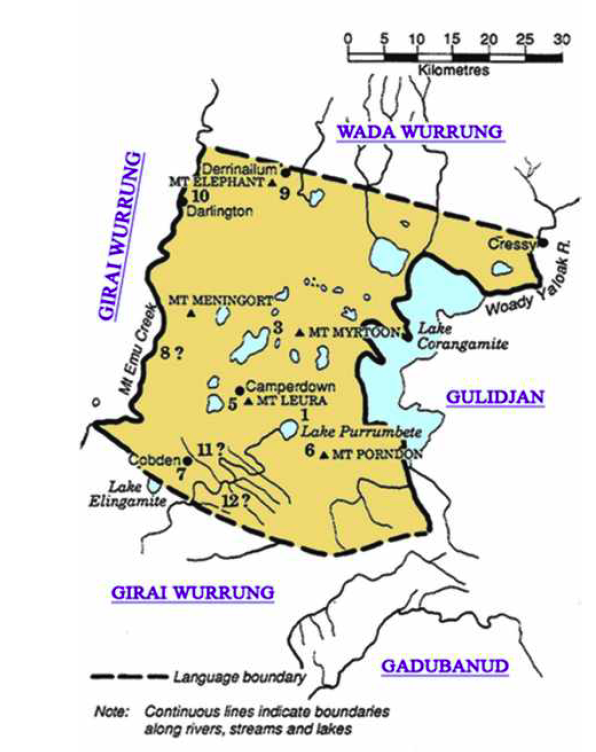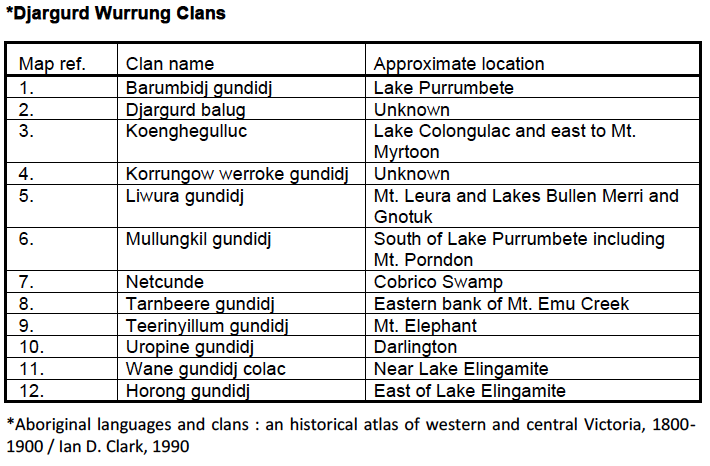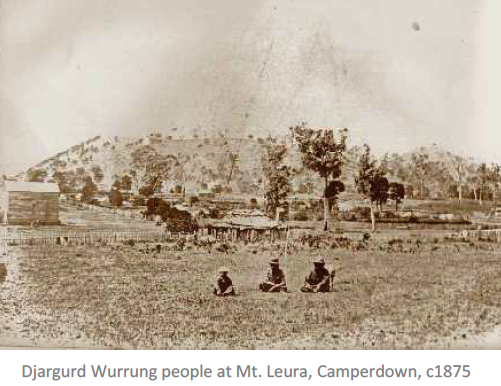Djargurd Wurrung First people of Camperdown and district.
The Djargurd Wurrung people occupied the territory between Mount Emu Creek and Lake Corangamite, extending to Darlington and Cressy in the North, and to Cobden and Swan Marsh in the South. The Djargurd Wurrung consisted of 12 clans, sharing a common language and strong cultural and family links, but each with its own territory and customs. The Camperdown area was the Country of the Liwura gundidj clan. The language spoken by the Djargurd Wurrung was a dialect of the of the Dhauwurd Wurrung language (also called the Warrnambool language). It was very similar to the dialect spoken by the neighbouring Girai Wurrung people.
Within a few years of the arrival of the Europeans in 1839, the number of Djargurd Wurrung people was in steep decline. Despite sometimes violent resistance, by 1843 the Djargurd Wurrung were totally dispossessed of their Country. Dispossession led to starvation and their theft of sheep resulted in murderous reprisals. In 1839 one clan, the Tarnbeere gundidj, was massacred by Frederick Taylor and others at a site near Mount Emu Creek, south of Darlington. It came to be known as “Murdering Gully”.
The surviving Djargurd Wurrung became fringe dwellers around the townships. Some found sanctuary on the properties of a few sympathetic land holders.
When Framlingham Aboriginal Station was established in 1865 near Warrnambool, many of the surviving Djargurd Wurrung were coerced to relocate. However, a number of elders refused to abandon their Country. When he died in February 1883, Wombeetch Puyuun, also known as Camperdown George, was the last member of the Liwura gundidj clan still living on Country.


